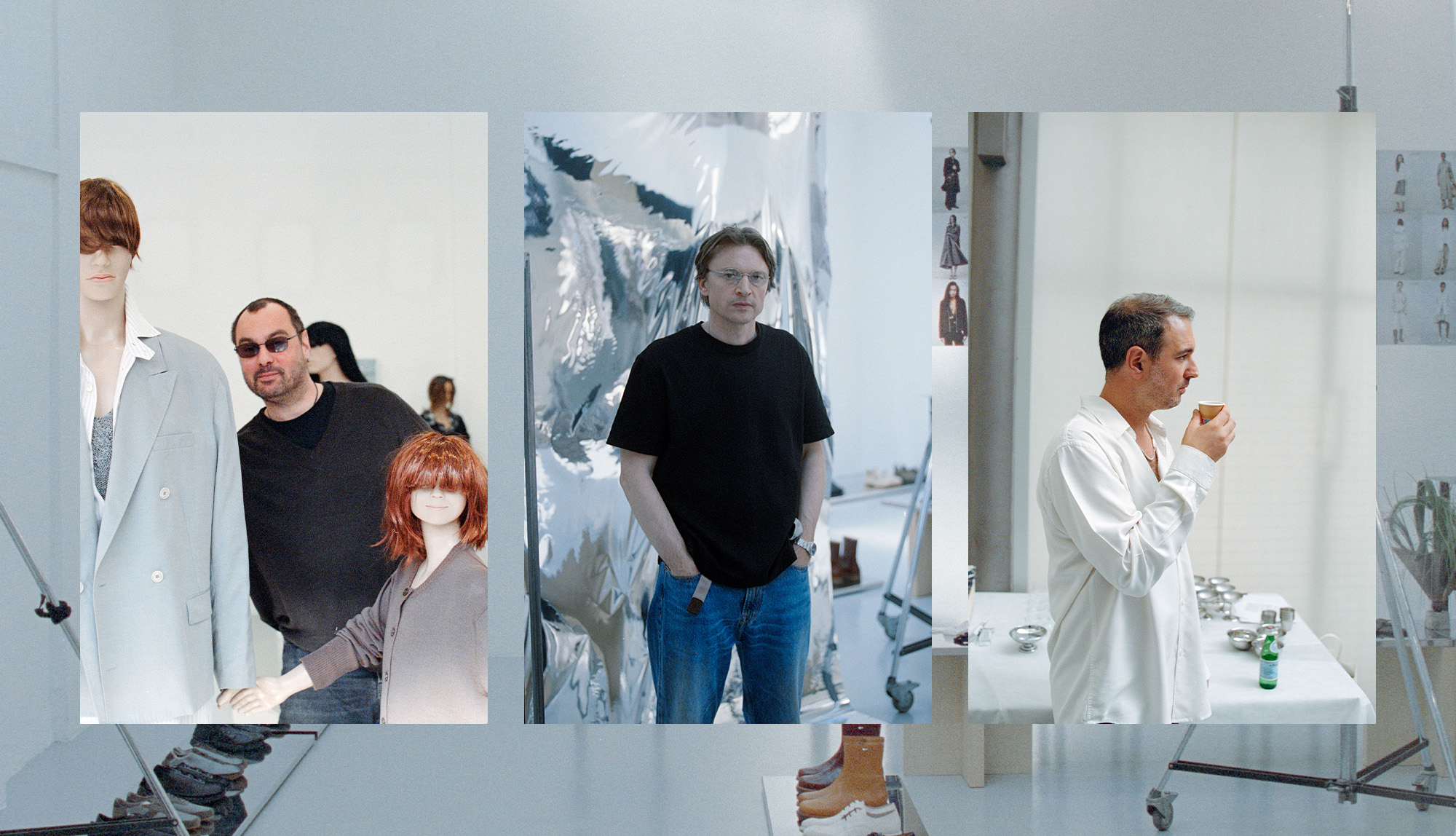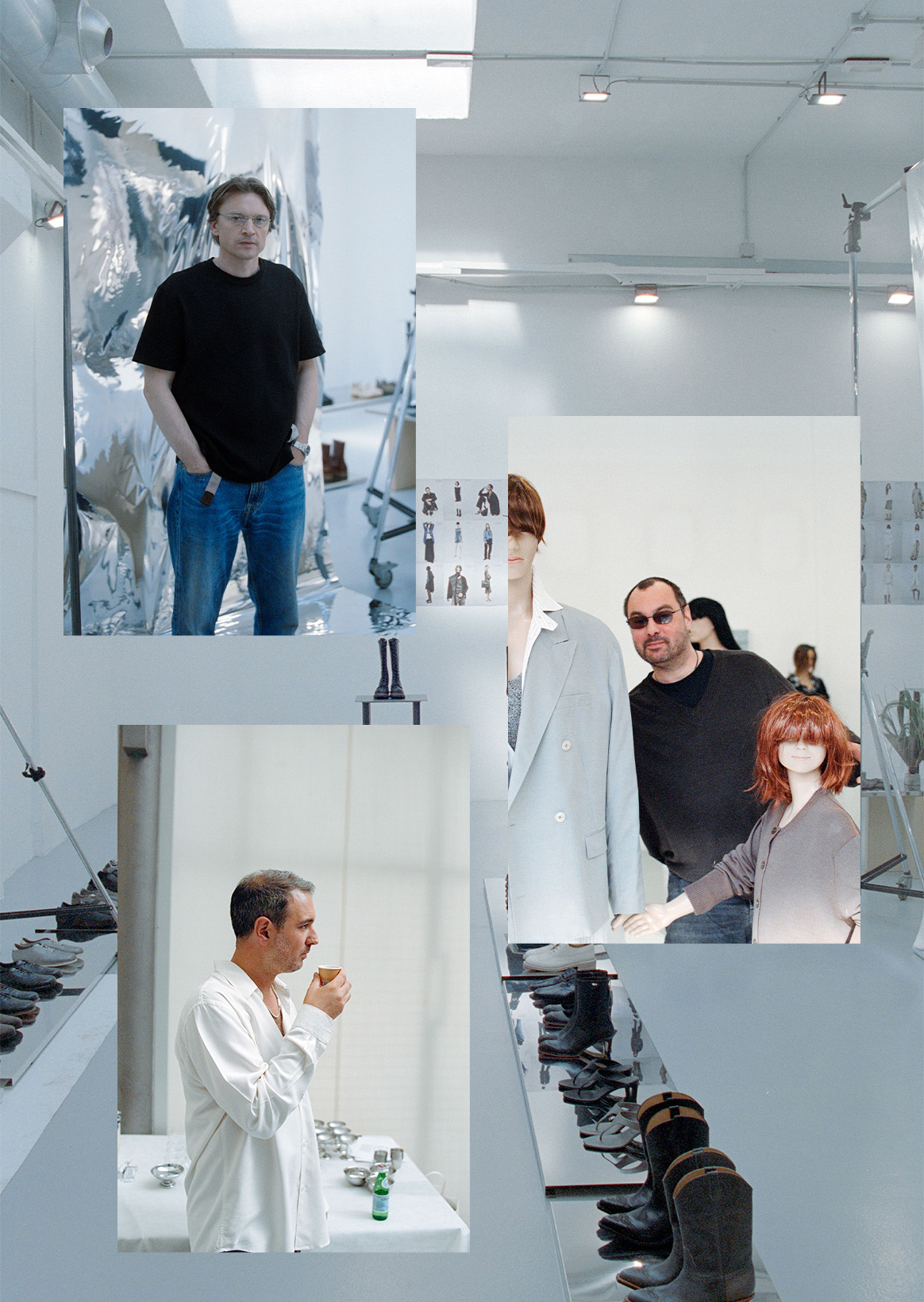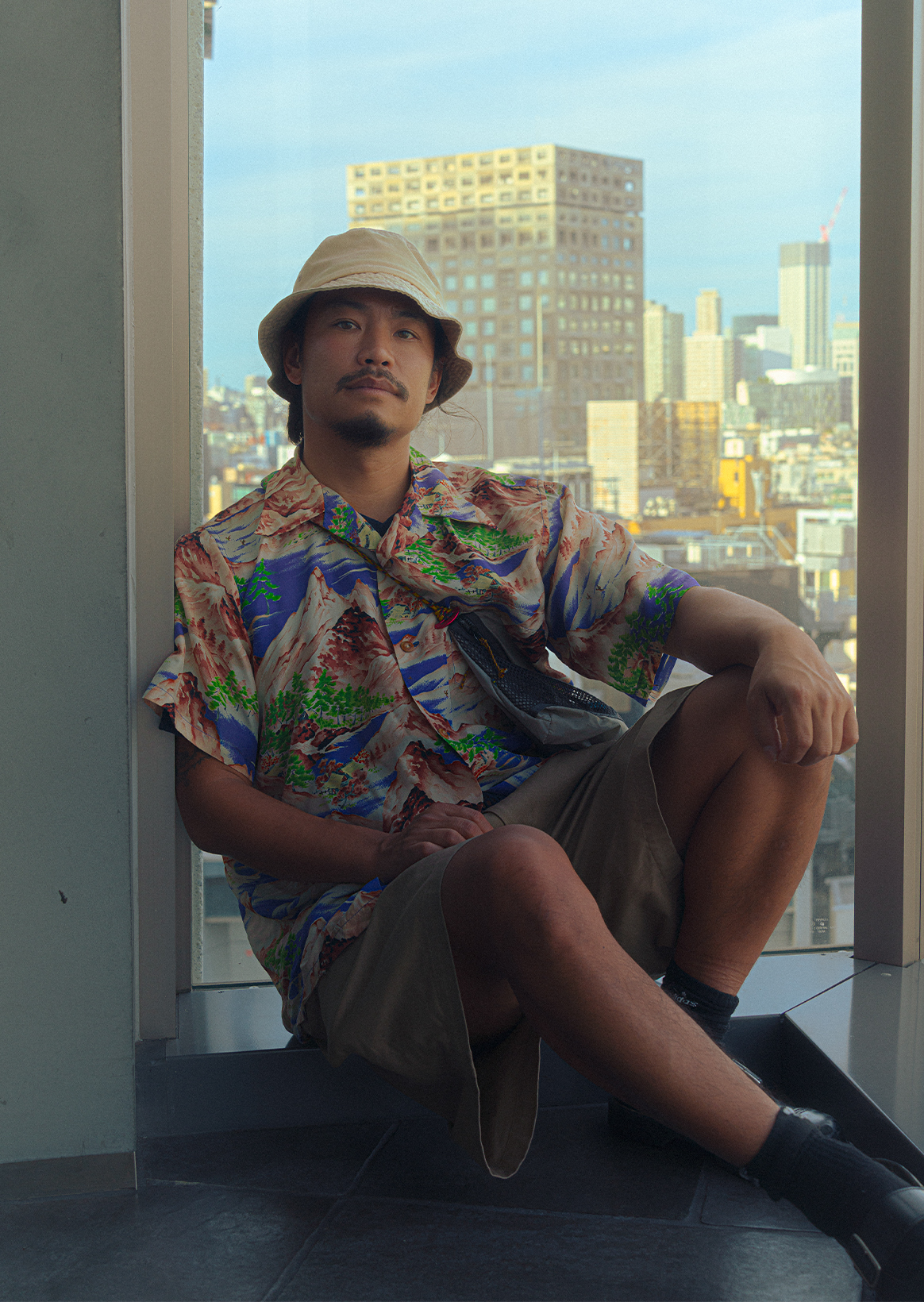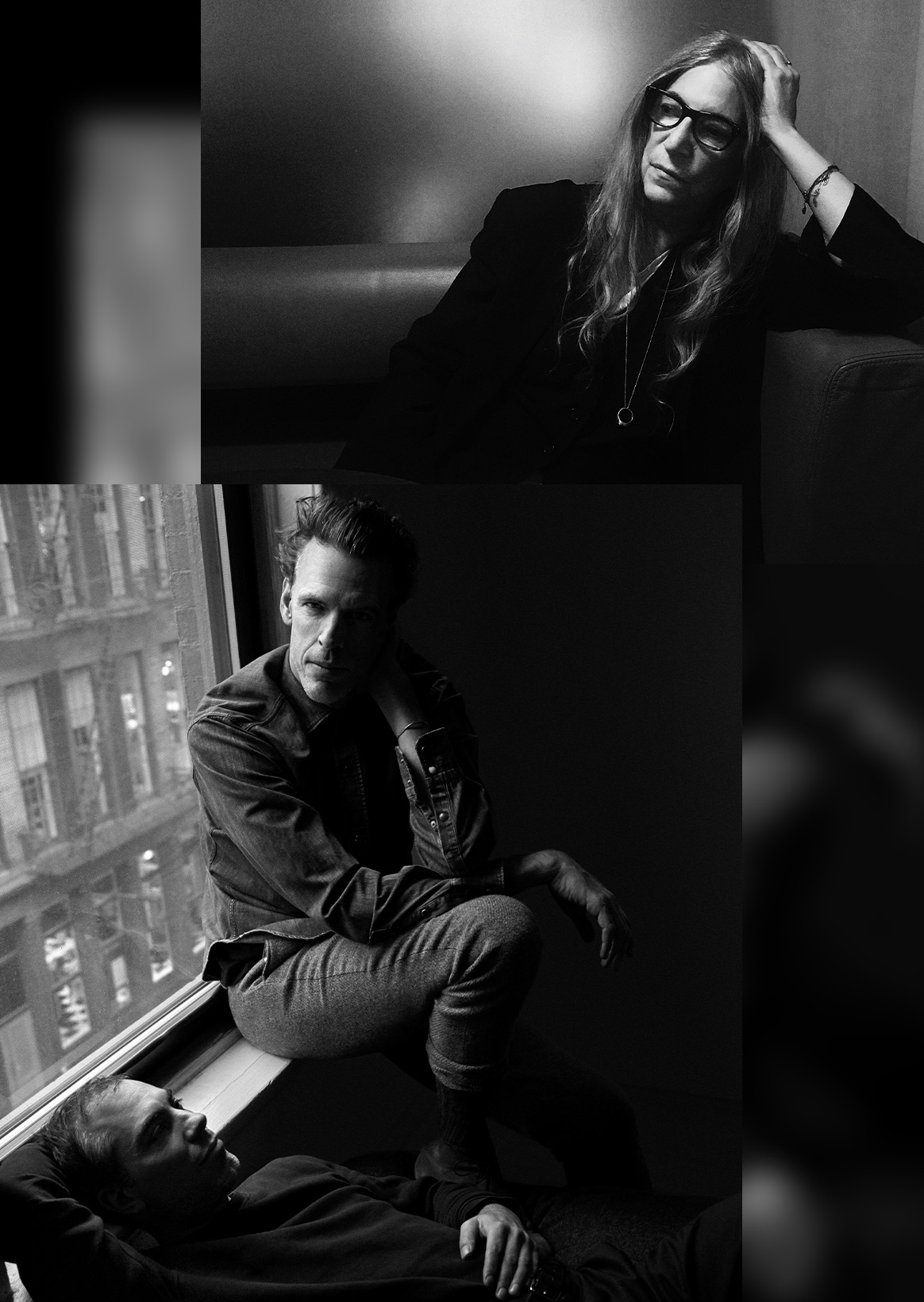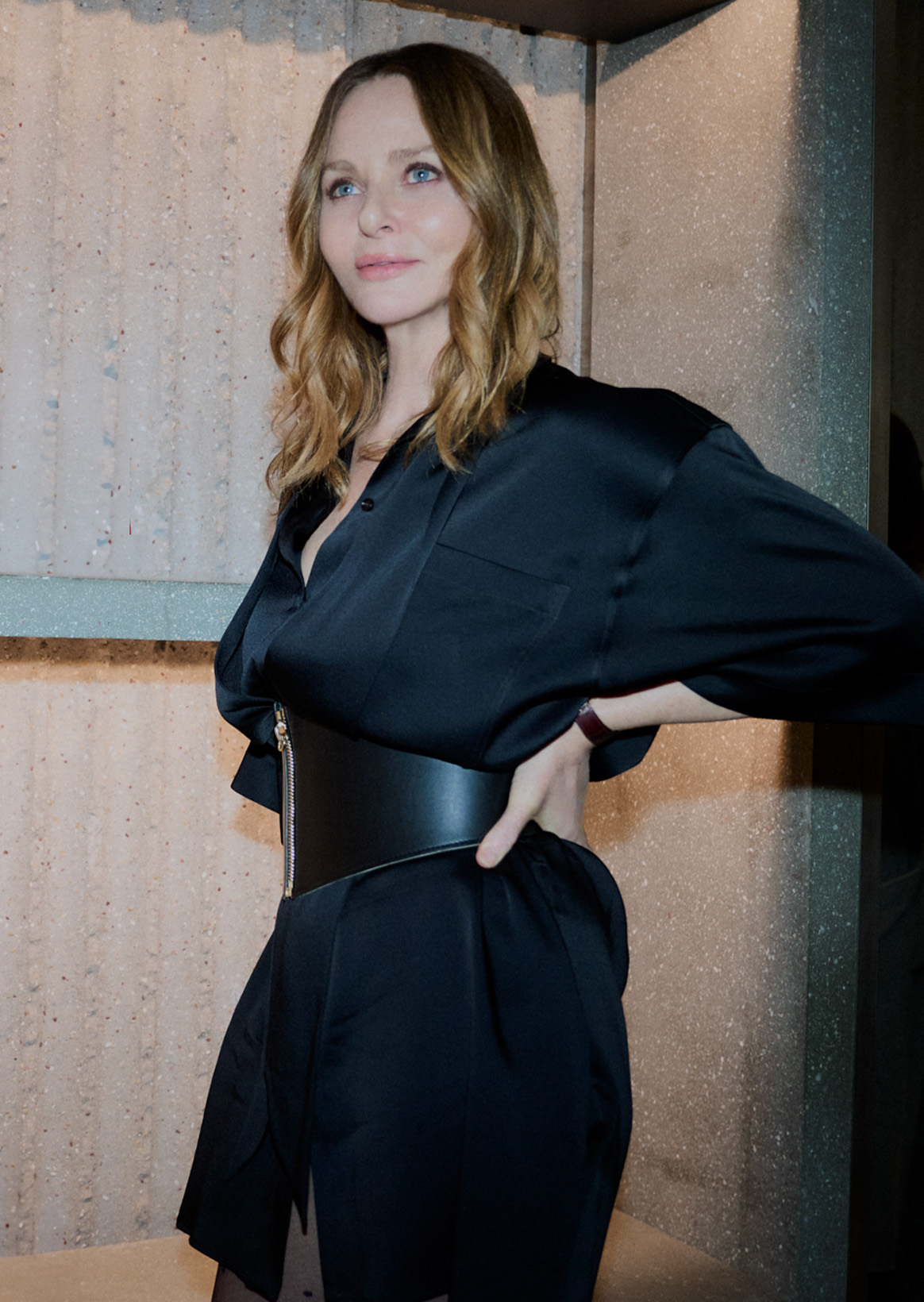Jockm Harlin and Christopher Neeing, who met through ice hockey in their teens and became friends, founded OUR LEGACY in Stockholm in 2005, eventually joining Ricardo's Claren as partners. For nearly 20 years, sensibilities inspired by street cultures such as music, skateboarding, and art books have gone beyond the existing framework of fashion and continue to create expressions that explore sustainability. On June 13, 2025, we opened our first shop-in shop in Japan on the 2nd floor of Shibuya PARCO. Since 2016, we are also developing items from the project WORK SHOP that reuses dead stock, samples, and recycled materials with a focus on sustainability. Expression through clothes, the origin of creation, and the inspiration we received from Tokyo. In this email interview, we will unravel the philosophy of their steps and creation.
※ The English version is available below.
- Photo
- Nils Junji Edström
- Text
- Tomoko Ogawa
- Edit
- RIDE Inc.
 Jockum Hallin
Jockum Hallin  Cristopher Nying
Cristopher Nying  Richardos Klarén
Richardos Klarén
What kind of impression did you have when you met each other through ice hockey when you were teens? Please let me know if there is any part that you feel that you are in your teenagers at that time and still feel that you are still in your midst.
I met Christopher at the age of 13. He was so good at practicing junior ice hockey, and he was promoted to my older team. I was born in 1980, and he was born in 1981, so I was almost old, but at that time I was already obsessed with music, snowboarding and skateboarding, and was moving away from hockey. I was slow to start hockey myself, and I was working hard to find my place. Meanwhile, Christopher came to the team as an energy-filled new star. That attitude is the same now. Anyone who meets him will be amazed by his persistence, energy and curiosity. He is always a person who moves forward, and it has not changed since ancient times.
Christopher Niin (Christopher) We were playing hockey together, and the first time we met was on the bus. The first impression was that yockm was calm, cool, and stylish, obsessed with music. That impression has never changed.
What moment did you feel the joy of creating for the first time?
Christopher originally drew oil paintings and made sculptures. When it comes to clothes, when I was 16 years old, I started experimenting with jeans with my friends in the local Houskvana. I tied the jeans with a rope behind the car and dragged it over the mud to damage it. After that, I took a shower with jeans on, went into the sauna and dried it. I still remember the excitement at that time clearly.
How do you think about the importance of explaining and expressing yourself to others through clothes?
When you are young, clothes play a major role in finding your identity and whereabouts. Clothes can express themselves without explanation. This will encourage people to come and leave, and find friends and friends. Even as an adult, clothes continue to be a means of self-expression. Do you want to show it to the right person or to show it freely and creatively? Clothing is still a powerful tool, but as we get older, the way we get involved changes little by little.
What do you think is necessary to keep doing what you really want to do? And how did you train yourself to be able to do that?
Christopher: For me, graphic design was a big entrance. I learned to go back and forth between physical production and digital production, and that sense of balance became a means of shaping images. This is still useful when making clothes and expressing emotions visually. Books are always inspiring. In particular, art books and photo books have kept me excited for a long time.
By the way, what is the artwork that brought you up? What kind of feeling did you call up then?
I was greatly influenced by how Christopher Marcel Duchamp's work was captured. He treats his work very conceptually, and his freedom is impressive. When a Stockholm curator copied his work in New York, he affirmed, rather than getting angry. The idea that anyone can replicate their work is a controversial but very open mind. The toilet bowl signed "R. Mutt" is famous and funny, but I also like the story that his favorite was a comb that no one noticed at the exhibition. I was strongly influenced by the lack of boundaries. It still reminds me of my free attitude towards creation.



ー OUR LEGACY has the strength of starting with members from different backgrounds that are not fashion, so I think we are building a place in the fashion industry where we can experiment with pragmatic yet unique, progressive and sustainability. What is the secret to continuing to build such a place?
I think that's exactly right. As the company grows, hierarchy and decision-making mechanisms are needed, but at the same time, we value open and democratic ways of working. It is not who thought, but always has the attitude of "the best idea wins". The atmosphere is very relaxed and it is a family-like workplace. We work happily while helping each other. Fashion is fun. Clothing and food, wine, sports, art, photography, music……I'm really happy to be able to work surrounded by such things, and the fun is reflected in the atmosphere of the company and the sense of peers.
ーWhat is the source of inspiration in creation?
Christopher is often born of conflict. I'm stuck in something, but at a moment an idea comes up. Suddenly, when you are taking a shower or cooking, it feels like a sudden bite. You must not miss that moment. After all, art books and photo books. I've been reading the same book many times since ancient times, and every time I find something new. Not looking for something that comes naturally. For me, I don't think creativity is forcibly produced.
ーーWhat have you learned since you started WORK SHOP, one of the key initiatives at OUR LEGACY? Please tell us about the challenges you faced in the process of advancing the philosophy of "making clothes without leaving garbage as much as possible" for about 10 years, as well as new discoveries.
YOCKM WORK SHOP is an important part of our OUR LEGACY ecosystem. The main line and WORK SHOP interact with each other, not one of them. The big challenge is working with large companies. We are small and easy to move, but big companies are inevitably slow. It's like changing the direction of the tanker. But we’re working patiently, and that attitude often has a positive impact on our partner companies. It's difficult to make use of existing materials and find new sustainable solutions, but it's very rewarding.

ーWhile past memories are found in silky, textures, and clothes, OUR LEGACY seems to be creating a new context through “reinterpretation”. What do you think about the balance between nostalgia and non-nostalgia?
Christopher: I don't think it's too nostalgic. Maybe that’s what people wear and see. For me, it is closer to the feeling of collecting and holding what I really like. For example, in the Spring/Summer 2026 collection, I made a jacket based on vintage items I bought for the first time. It was still a military piece I got before I was involved in fashion, just because I liked it. I left only the upper half and cut it. It didn't have any special nostalgic meaning, but some people may feel nostalgic, and the new generation may take a completely different view. For me, it is now to reinterpret honestly, not to recreate the past.
ーWhile there is a division of roles such as creative directors, designers, and CEOs, how do you work together while balancing them well?
I have been working together for more than 20 years, but I think the role is clear. You can move freely in your own area while being independent. That's why I don't go too far and I'm well balanced. But at the same time, there are also points to cross, and there are moments where we move together as a team in the same direction. In addition, the strength is that we are three of us. If there are only two people, opinions may break and stagnate, but if there are three people, you can always decide. Sometimes it's wrong, but I'll go ahead anyway.
Ricardo's Claren (Ricardo) I've been working together for 20 years, and I've known each other for a long time, so it's very easy to do. Fundamentally, we have a shared vision of how we want to build a brand and how we want to work every day. The aesthetic sense can sometimes be different, but it is also a good stimulus. In addition, the teamwork of the whole company is also very natural and comfortable. Everyone is working together in the same direction, and I think that's what we're doing.


ーーーWe collaborate on many projects, but what do you want from your partner?
YOCKUM What we want is something that excites us. People and things that give me a new perspective, not a person like a mirror copy of their own. Whether it's a sports brand, a chef or a wine producer, a musician or a furniture company. Even in areas where we are not directly involved, we are strongly inspired by what we can feel passionate about.
Against the background of the pastockholm context, you have become a globally acclaimed brand. What do you think about the importance of being "local"?
Christopher Sweden is not a country of fashion. Since the industrial scale is not large, you can concentrate on your own world. In Tokyo, the presence of fashion is very large, but in Sweden it is quiet and you can bring your own way. Personally, I don’t feel like it’s Swedish. I was from Houskvana, not Stockholm, and it was rather a journey that shaped me. Therefore, I think "local" is a viewpoint of how to carry it while being the hometown.
ーーーーーーーーーーーーーーーーーーーーーーーーーーIf you have inspiration from the city of Shibuya, Tokyo, please let us know if you have inspiration from handmade unique pieces inspired by taxi culture, especially in the city of Shibuya, Tokyo. I would like to ask you if you have any personal memories or impressions.
Jockm Handmade's work was inspired by a race seat cover found in a taxi in Tokyo, in collaboration with Finnish furniture brand Artek and Swedish crochet writers. If you're lucky, that beautiful cover you'll meet. Tokyo, especially Shibuya, is a city with new discoveries every time I go. The surface alone is fun enough, but as you go many times, you can feel the depth as if you peel off the layer little by little. I think the sense of exploring and finding it is a unique charm of Tokyo. It's a collection of small discoveries rather than concrete memories. Someone told me, "This used clothing store is good," "This sushi restaurant is the best," and "Let's look at this exhibition," and I was lost on the map, and it was on the 10th floor of the building, underground, behind a room in an ordinary apartment, behind a laundry room. If you put your knees and pass through a small door, there will be a magical space. There is no other city where you can experience that kind of experience, so every time I go to Tokyo, I feel the same excitement.
I think the fun of Christopher Shibuya is mixed together. There's craftsmanship, technology and the future, and it's like five cities were packed into one block. It's fun to get lost there. When I went to Nobee Yokocho on my second trip to Tokyo, I was approached by a Japanese man about 70 years old and spent the night together. He took me to dinner, laddered the bar, and finally sent me to the hotel. Although it was a complete first-time encounter, it was very kind and friendly, and the experience is still unforgettable.
I love Ricardo's Shibuya. It's a place where you can enjoy fashion, culture, art, music, whatever you're interested in. Of course, I like to visit PARCO, but vintage shopping around Cat Street is one of the pleasures. In the past, I used to like eating at Yokocho under the tracks, but recently it seems that the number of tourists has increased (laughs). In the morning, you can run at Yoyogi Park and enjoy the beautiful scenery. After that, you can take a walk in Tomigaya and find delicious coffee. The night ends with karaoke. On the upper floor of the building, it will be the best night anywhere!

Jockum Hallin and Cristopher Nying first met as teenagers through ice hockey, a friendship that later led them to establish OUR LEGACY in Stockholm in 2005. Richardos Klarén joined as co-founder, and together they have cultivated a sensibility shaped by nearly two decades of immersion in street culture —through music, skateboarding and art publishing. Their work has steadily moved beyond the usual boundaries of fashion, pursuing sustainability while creating a distinctive form of expression. On 13 June 2025, they opened their first space in Japan—a shop-in-shop on the second floor of Shibuya PARCO. Alongside their mainline collections, the store also features WORK SHOP, the ongoing project they began in 2016 that reuses deadstock, samples and recycled materials. Clothes as a form of expression, the origins of creativity, and the inspiration they have found in Tokyo—these are the themes we explore in this email interview.
――This question is for Jockum and Cristopher. When you first met as teenagers through ice hockey, what impressions did you have of each other? What kind of kids were you back then―and what parts of that still remain in you today?
Jockum: I met Christopher during junior ice hockey training when we were about 13. He was so good that he had to move up and play with an older team - my team. I was born in 1980, and he was born in 1981, so we weren’t that far apart, but I was just getting into things that really shaped me: music, snowboarding, skateboarding. I was on my way out of hockey, while he was just coming in. I started playing hockey quite late, so I had to fight to earn my place. Christopher, on the other hand, came in as this young star full of energy on the ice, and I feel that’s still with him today. I think people that meet him are impressed with his persistence, energy and curiosity. He just keeps on going - always pushing—and that’s something that’s really stayed with him.
Christopher: We played hockey together, and the first time I actually met him was on a bus. Jockum was this calm, good-looking guy with a cool style who was always into music. That first impression of him has really stayed with me.
――Could you tell us about your first memory of experiencing the joy of creation?
Cristopher: I started out painting with oils and making sculptures. With clothing, I was sixteen and me and my friend took a pair of jeans to a parking lot in Huskvarna, where I grew up. We tied a rope to the car and dragged our jeans in the clay and then we went home and showered in them and then we sat in the sauna for them to dry. That moment was the first memory of experimenting and I remember the excitement me and my friend had from that experience.
――What are your thoughts on the importance of explaining and expressing who you are to the others through clothing?
Jockum: As you go from young person to teenager to young adult into adulthood, I think clothing has different ways of being important in your life. When you are young, it’s often about identity and finding your place. For me it’s such a direct and effective way to show who you are, without any explanation. Your surrounding can easily gravitate towards or from you which in turn helps you find your group, your band mates, your friends. As you get older, clothing still allows you to express yourself - whether you want to come across as sharp and reliable or more free and creative. It remains a powerful tool, even if your relationship to it changes over time.
――What do you think is essential to keep doing what you truly want to do? And what experiences have shaped or strengthened you to be able to do that?
Cristopher: For me, graphic design was an important entry point. It taught me how to move between physical creation and digital creation. That balance became a tool for me to visualize things—something I still use everyday, whether it’s making clothes or visualizing a feeling. But something that always kept me excited and kept me doing what I do is books; art and photobooks always keep me inspired.
―― Is there a work of art that shaped you in a lasting way? What kind of feeling did it awaken in you?
Cristopher: Maybe Marcel Duchamp and the way he viewed his own work. I’ve always loved how he approached art conceptually. There’s this story about an artwork he created in New York—if I remember correctly, a curator from Stockholm, possibly Pontus Hultén (though I might be wrong), ended up copying it. But instead of being upset, Duchamp actually encouraged it. His idea was that anyone could replicate his work—you just needed to confirm and sign it, and then it was yours. It’s a controversial concept, but also incredibly open-minded. One of the most iconic examples is the urinal he signed “R. Mutt,” which is just hilarious. And his personal favorite piece? A pet comb that no one even noticed during the exhibition. That became his favorite simply because it went unseen. I think what really stuck with me is that sense of freedom and openness—that there are no real boundaries in creativity. It’s a mindset that continues to inspire me.
―― I think that the unique strength of OUR LEGACY comes from having team members with diverse backgrounds outside of the typical fashion industry. Perhaps it’s this perspective that allows you to create a space within the fashion industry that is pragmatic, unique, progressive, and open to experimenting with sustainability. What do you think is the key to maintaining such a space?
Jockum: This is a very good and very on-point question, it really identifies elements that define Our Legacy and make it such a special place to work at. In a growing company, there has to be some hierarchy and someone who can make decisions, but at the same time, we believe in a more open and democratic way of working. We try to push that mindset every day: that the best idea should always win. It’s not about who comes up with it—it’s about the strength of the idea itself. We have a relaxed, family-style way of working. We look out for each other and help each other out. It’s also a fun place to be. Fashion is fun—and whether your passion is clothing, food, wine, sports, art, photography, or music, we’re lucky to be surrounded by it every day. That joy really comes through in the atmosphere and camaraderie within the company.
―― What inspires your creative process?
Cristopher: Often it comes through struggle. You wrestle with something, and then suddenly it clicks—maybe when you’re in the shower or cooking food. You have to be quick when those thoughts come because those ideas are tough to loose. Art books and photo books have also been a big inspiration for me. I still read the same ones over and over, and every time I find new things or new angles. I’m not searching for it—it just happens, for me creativity shouldn’t be forced.
―― Since launching WORK SHOP, what have you learned along the way? How has your philosophy around minimizing waste evolved over the past almost decade, and what challenges or discoveries have shaped that journey?
Jockum: We’ve picked up and learned a lot along the way. WORK SHOP is something we’re really proud of—it’s become an essential part of OUR LEGACY’s ecosystem. The mainline and WORK SHOP exist in a kind of creative symbiosis; one really can’t thrive without the other. One ongoing challenge is working with large companies. We’ve been lucky to collaborate with some of the most respected and exciting brands in the world. Compared to them, we’re small, fast, and tactile - while bigger companies move slower. “Turning a tanker” takes time. But we’re persistent and hold firm in our approach, especially with WORK SHOP, which is more sustainability-focused. That mindset often pushes our partners to adapt in positive ways. Working with existing materials or finding new sustainable solutions is always challenging- but it comes with great rewards.
―― Your work often evokes a sense of nostalgia―through silhouettes, textures, or references―but never feels retro or sentimental. How do you think about the balance between nostalgia and non-nostalgia in design?
Cristopher: I don’t really think of myself as nostalgic. I think that feeling probably comes more from the viewer or the person wearing the piece. For me, it’s more about collecting and holding on to things I genuinely love. For example, in SS26 we made a jacket based on the first vintage piece I ever bought—way before I was even working in fashion—just because I liked it so much. It was a military boiler suit that I cut, leaving just the upper part. There wasn’t any grand nostalgic intention behind it. Maybe someone else sees nostalgia in that—and that’s fine. Maybe a new generation sees it completely differently. It’s more about reinterpreting things in a way that feels honest now, rather than trying to recreate the past.
―― Even with defined roles―creative director, designer, and CEO of OUR LEGACY―what keeps your collaboration fluid and well-balanced? What makes this trio work so well?
Jockum: It’s true, it works well. Even though we’ve been working closely together for over 20 years, our roles have always been clearly defined, and I think that’s a big part of why it works. It makes us feel independent and it gives us the freedom to work in our own field without stepping on each others toes. That said, we also have these natural intersections where we come together and feel that we are a team, where we push each other and strive toward the same direction and goal. And the fact that we’re three people is actually a strength. It means we always reach a decision. If it were just two of us, we might get stuck in disagreement and risk not moving forward at all. But with three, two will always agree, and the third has to fold. Of course, sometimes we make the wrong call, but at least we make a call and keep things moving.
Richardos: I think the fact that we have worked together for 20 years and also knew each other before that makes it easier. We are friends at heart, have a lot of the same core values and a common view on how we want to build the brand and work day to day. We also have a lot of the same references even though our aesthetics can differ sometimes, which is also good. Also I want to say that everyone in the company are working together in a really nice and natural way.
―― You frequently work through collaborations. What do you look for in a partner? And is there another word you'd use―something that better reflects your own approach to working together?
Jockum: What we look for in a partner is someone or something that excites us - something that sparks our curiosity and makes us want to learn more. We’re not looking to mirror ourselves, instead we’re looking for partners that can challenge us and that can offer new perspectives. It could be a sports brand, a chef, a wine producer, a musician, or a furniture company - fields that we may not work with directly but that we are passionate about and inspired by.
―― While rooted in Stockholm, OUR LEGACY has gained global recognition. What does being “local” mean to you, and why does it matter?
Cristopher: What I like about Sweden is that it’s not really a fashion country. There isn’t a huge industry here, and that gives a certain focus. In Tokyo, the scene is so big—you feel it everywhere. In Sweden it’s quieter, and we bring our own world into it. Personally, I don’t feel very “Swedish” in that sense. I grew up in Huskvarna, not Stockholm, and a lot of what shaped me came from traveling. So being local for me is about perspective—it’s where you come from, but also how you carry it with you.
―― Like the handmade unique pieces inspired by taxi culture, is there anything in particular about the city of Shibuya in Tokyo that has inspired you? We’d love to hear any personal memories or impressions of the city.
Jockum: The handmade pieces were part of a collaboration we did with Artek, a Finnish furniture company, and a Swedish crochet artist. We dressed their chairs with these beautiful crocheted covers inspired by the ones you see in Tokyo taxis (if you are lucky). Tokyo, and especially Shibuya, is such an amazing place. You go there and you’re never bored, there’s just so much to explore. As you go there again and again you’re slowly peeling the layers of the city and discovering all these subtle nuances that make the city so endlessly fascinating. I don’t have one specific memory, but what always stands out is that feeling of being given an address, someone tells you to check out this vintage shop, an incredible little sushi place, or a small exhibition and then you’re standing on the street, completely lost, with no idea where it actually is. You have to stay curious and figure it out on your own. It might be ten floors up in a nondescript building, hidden underground, or tucked away behind a laundry room in a regular apartment block or you almost have to crawl on your knees through a tiny door, only to find the most magical places. That kind of discovery feels unique to Tokyo, and it’s a big part of why I keep coming back with the same excitement every time.
Cristopher: What I like about Shibuya is the mix—you have this really strong sense of craft, but also technology and the future everywhere. It can feel like five cities packed into one block, and you can just disappear there. On my second trip to Tokyo, I went to‘Drunkard's Alley and met this older Japanese man, maybe around seventy. He waved at me, and we ended up spending the whole night together. He took me out for dinner, we went to a few bars together, and then walked me back to my hotel, a complete stranger but so friendly and kind to me. It was really random, but one of my best memories from the city.
Richardos: I love Shibuya, there are so many different things to do if you are into fashion, culture, art and music. Besides visiting Parco, I like to go vintage shoping around cat street. I used to like to explore the atmospheric food alleys under the railway tracks but someone recently said that there are too many tourists there nowadays. I usually go running in Yoyogi park in the mornings, beautiful settings. Also walk around in Tomigaya and look for the perfect coffee. End the night with Karaoke somewhere, anywhere high up in a building will do!

- Shop name
- OUR LEGACY
- Floor
- 2F
- Official Brand Site
- https://www.ourlegacy.com
- Official SNS
- Instagram(@ourlegacy)
